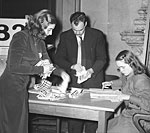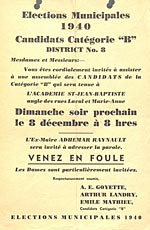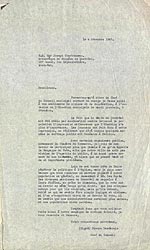

New form of municipal government
In 1940, the city, highly tinged with corporatism, was placed under a new political regime by the provincial government. City council now comprised 99 councillors, divided up into 3 categories. There were 33 Class A councillors, elected by owners, 33 Class B councillors chosen by taxpayers, namely owners and tenants, and 33 Class C delegates appointed by 13 city associations and agencies. Montréal was divided up into 11 electoral districts, each one electing 6 councillors. Each category then appointed two representatives to sit on the executive committee.
The complexity of the new electoral system brought about a sharp drop in voter turnout. In the 1920s and 1930s, voter participation was relatively high. The percentage always stood at 50% or so. In the middle of the 1930s, the proportion of electors jumped to 64%, record high in the political history of Montréal. At the elections held in 1940 and 1942, the voter turnout was respectively 30% and 22%.
In 1944, voter participation jumped to 47% when Camillien Houde returned on the political scene. He made a dramatic move in the 1940s by openly declaring his opposition to the conscription ordained by the federal government. He was arrested on August 5 by the federal police under the War Measures Act, and spent four years at the prison camp in Petawawa, Ontario, before being transferred to Fredericton, New Brunswick.
Montrealers cheered his release on August 16, 1944. On December 11, Houde was easily re-elected mayor, and remained in office until 1954.
























